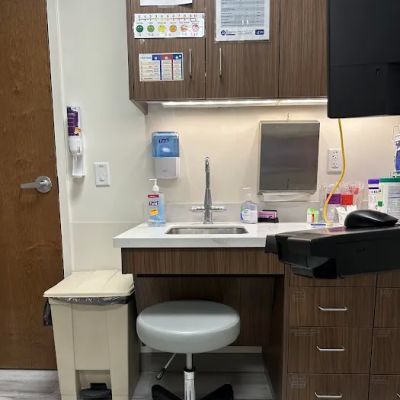- What is Coronary Artery Disease (CAD)?
- Causes and Risk Factors of Coronary Artery Disease
- Symptoms and Diagnosis of Coronary Artery Disease
- Prevention and Treatment of Coronary Artery Disease
- Case Study: A Real-Life Example of Coronary Artery Disease
What is Coronary Artery Disease (CAD)?
Coronary Artery Disease (CAD), also known as atherosclerotic heart disease, is a condition where the arteries that supply blood to the heart become narrowed or blocked due to the buildup of fatty deposits called plaque. Over time, these plaques can restrict blood flow, depriving the heart of the oxygen and nutrients it needs to function properly.
This lack of blood flow can lead to chest pain (angina) or even a heart attack. CAD is the leading cause of death worldwide, and understanding the mechanisms behind it is critical to prevention and management. The process of plaque buildup in the arteries is gradual, often occurring over many years, which means that early detection is key to effective treatment.

Causes and Risk Factors of Coronary Artery Disease
Coronary artery disease develops due to a combination of genetic and environmental factors. The primary cause is the accumulation of cholesterol, fatty substances, and other materials on the walls of the coronary arteries. Several risk factors increase the likelihood of developing CAD:
- High Blood Pressure: Over time, high blood pressure damages the arteries, contributing to plaque buildup and narrowing.
- High Cholesterol: Elevated cholesterol levels, especially low-density lipoprotein (LDL) or "bad" cholesterol, lead to plaque formation in the arteries.
- Smoking: Smoking accelerates the development of plaque in the arteries and increases the risk of blood clots.
- Diabetes: High blood sugar levels can damage the blood vessels, increasing the risk of CAD.
- Obesity: Excess weight strains the heart and leads to higher cholesterol and blood pressure levels.
- Family History: Genetics play a role in CAD risk, as a family history of heart disease increases your chances of developing the condition.
- Lack of Physical Activity: Regular exercise is essential for maintaining a healthy heart, and a sedentary lifestyle is a significant risk factor for CAD.
Symptoms and Diagnosis of Coronary Artery Disease
Many people with coronary artery disease may not experience symptoms until the condition is more advanced. Some common symptoms include:
- Chest Pain (Angina): The most common symptom of CAD is chest pain, often described as a tightness or pressure in the chest. It may occur during physical activity or emotional stress and can subside with rest.
- Shortness of Breath: If the heart cannot receive enough oxygen-rich blood, shortness of breath may occur, especially during physical activity.
- Fatigue: Feeling unusually tired or fatigued, even with minimal exertion, is a common sign of CAD.
- Heart Attack: A heart attack occurs when the blood flow to part of the heart is completely blocked. Symptoms may include severe chest pain, nausea, sweating, and pain radiating to the arm, neck, or jaw.
If any of these symptoms occur, seeking immediate medical attention is essential. To diagnose CAD, doctors typically perform tests such as blood tests, electrocardiograms (ECG), stress tests, and coronary angiography to examine the blood flow in the coronary arteries.
Prevention and Treatment of Coronary Artery Disease
Coronary artery disease is a preventable condition, and there are several lifestyle changes and treatments that can significantly reduce the risk:
- Healthy Eating: A heart-healthy diet that includes plenty of fruits, vegetables, whole grains, and lean proteins can help lower cholesterol and blood pressure.
- Exercise: Engaging in regular physical activity helps improve heart function, lower cholesterol, and reduce the risk of CAD.
- Quit Smoking: Smoking cessation is crucial to preventing the progression of CAD and improving overall heart health.
- Manage Blood Pressure and Cholesterol: Regular monitoring and medication, if necessary, can help keep blood pressure and cholesterol within healthy ranges.
- Medications: For individuals already diagnosed with CAD, medications such as statins, beta-blockers, and blood thinners may be prescribed to manage symptoms and prevent further complications.
- Medical Procedures: In severe cases, procedures like angioplasty or coronary artery bypass surgery may be needed to open blocked arteries and restore blood flow to the heart.
Case Study: A Real-Life Example of Coronary Artery Disease
Let’s take the case of Mary, a 58-year-old woman who was diagnosed with coronary artery disease after experiencing persistent chest pain during her daily walks. Despite being relatively active, Mary had high cholesterol and a family history of heart disease. After undergoing a stress test and coronary angiography, she learned that one of her coronary arteries was partially blocked.
Fortunately, Mary was able to catch her condition early and was placed on a regimen of medication, including statins to lower her cholesterol and beta-blockers to manage her blood pressure. She was also advised to make dietary changes, exercise more regularly, and quit smoking. With these interventions, Mary was able to prevent further damage to her heart and improve her overall quality of life.
Mary’s case highlights the importance of early detection and lifestyle changes in managing coronary artery disease. If you want to learn more about how to protect your heart and prevent coronary artery disease, visit HeartCare Hub for helpful resources and heart health products tailored to your needs.






















UVA Health UVA Cardiology, part of Culpeper Medical Center
uva coronary care unit
501 Sunset Ln, Culpeper, VA 22701, USA